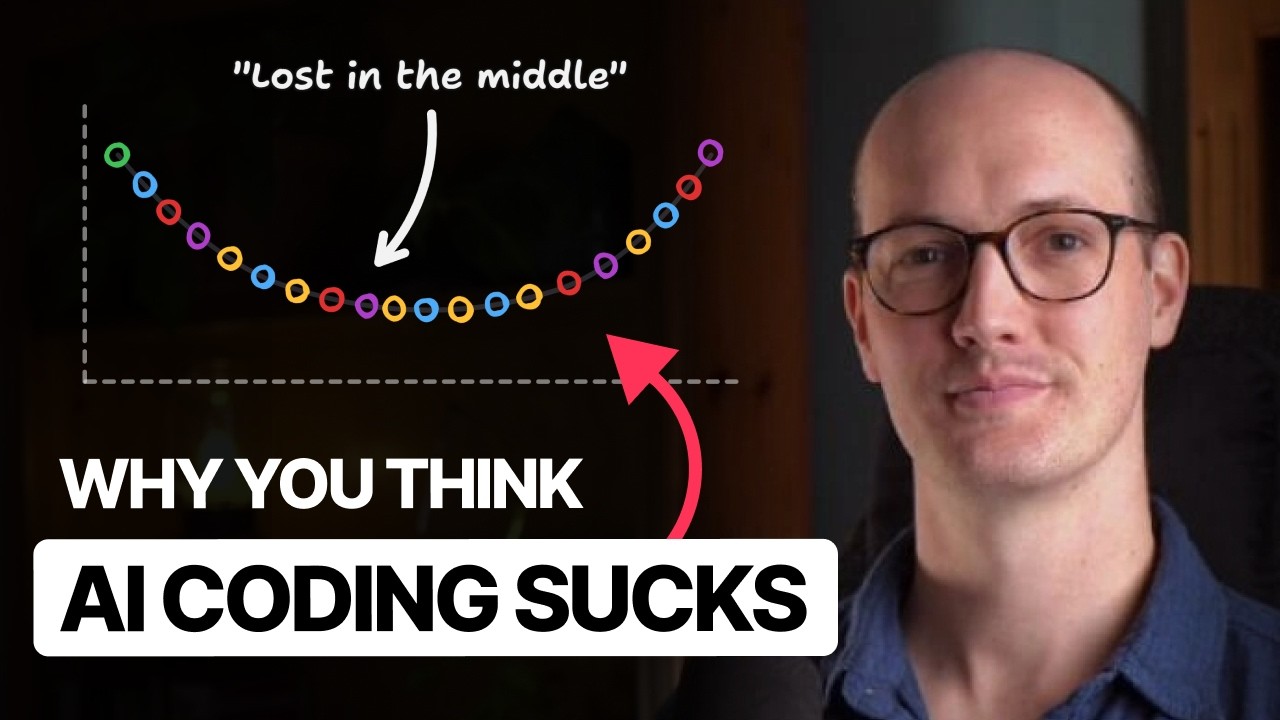The video explains that many developers struggle with AI coding agents due to a lack of understanding of the context window, a crucial limit on the amount of input and output tokens a model can process, which affects performance and accuracy. It emphasizes managing this constraint through techniques like clearing or compacting conversation history to optimize token usage and improve the effectiveness of AI coding tools.
The video addresses a common debate among developers regarding the effectiveness of AI coding agents. One side argues that these agents are ineffective and frustrating to use, while the other side believes that poor results stem from improper usage, labeling it a skill issue. The speaker acknowledges both perspectives but highlights a critical skill many developers lack: understanding the context window. The context window is a fundamental constraint for AI coding agents, yet many developers do not fully grasp what it is or how it impacts the agent’s performance.
The context window consists of all input and output tokens that the language model (LLM) processes during an interaction. Input tokens include system prompts, user messages, and any other instructions, while output tokens are the responses generated by the model. As conversations grow longer, the total number of tokens increases, eventually reaching a hard limit set by the model provider. Exceeding this limit results in errors or truncated outputs. Different models have varying context window sizes, ranging from a few thousand tokens to hundreds of thousands or even millions, but larger context windows come with trade-offs.
One key reason for context window limits is the computational cost and memory usage associated with processing large amounts of text. Additionally, larger context windows can degrade model performance due to difficulties in retrieving relevant information from a vast amount of data—a phenomenon known as the “needle in a haystack” problem. The model tends to prioritize information at the beginning and end of the conversation, often neglecting the middle, which can lead to less accurate or relevant outputs. This behavior mirrors human cognitive biases like primacy and recency bias.
To manage these limitations effectively, the speaker recommends regularly clearing or compacting the conversation history in coding agents. Clearing resets the context window, providing a fresh slate, while compacting summarizes the conversation to preserve essential information in fewer tokens. The speaker demonstrates this with Claude Code, showing how compacting drastically reduces token usage while maintaining the conversation’s core intent. They also caution against using MCP servers excessively, as these can quickly bloat the context window with system prompts and tool data, negatively impacting performance.
In conclusion, understanding and managing the context window is crucial for getting the best results from AI coding agents. Developers should not only consider the size of the context window but also how well a model retrieves and uses information within it. The speaker cites examples like Meta’s Llama 4 Scout, which, despite having a massive context window, struggled with lost-in-the-middle issues. By adopting strategies like clearing or compacting context and being mindful of token usage, developers can significantly improve their experience with AI coding tools. The video ends with an invitation to explore further learning resources and encourages viewers to engage with questions or topics related to LLMs and TypeScript.
